Blog Archives
Why Flip-Flops Are a Bad Long-Term Shoe Option
 Although flip-flops are a popular shoe to wear in the summer, they are not the best option for our feet. These shoes offer minimal protection and support, which can lead to injury. Furthermore, the materials that flip-flops are commonly made of, such as rubber and plastic, are known for being prone to harbor bacteria. Keep in mind that flip-flops can be worn but only for short periods of time. They should only be worn around the pool or cottage, but not for long-distance walking or running. If you are worried about attracting bacteria, make sure you are keeping your feet clean and dry.
Although flip-flops are a popular shoe to wear in the summer, they are not the best option for our feet. These shoes offer minimal protection and support, which can lead to injury. Furthermore, the materials that flip-flops are commonly made of, such as rubber and plastic, are known for being prone to harbor bacteria. Keep in mind that flip-flops can be worn but only for short periods of time. They should only be worn around the pool or cottage, but not for long-distance walking or running. If you are worried about attracting bacteria, make sure you are keeping your feet clean and dry.
Flip-flops are not always the best choice of footwear. If you have any concerns about your feet or ankles, contact Dr. Sharon Pletcher from Pennsylvania. Our doctor will assist you with all of your foot and ankle needs.
Flip-Flops and Feet
When the weather starts warming up, people enjoy wearing flip-flops. Flip-flops are comfortable, stylish, and easy to slip on and off; they're perfect for any summer beach goer. However, these shoes can cause harm to the feet.
How Can Flip-Flops Affect Me Long-Term?
- Ankle problems
- Hip problems
- Lower back problems
- Pain in the balls of the feet
- Problems with foot arches
- Changes in the way you walk
Are There Injuries Associated with Flip-Flops?
Yes. Since flip-flops are relatively weak and do not provide the same amount of support as sneakers, people who wear flip-flops regularly are more susceptible to injuries. On top of that, the open nature of the shoe makes your feet more prone to other problems, such as cuts and even infections. Common injuries and ailments include:
- Sprained ankles
- Blisters
- Infections
- Cuts and Scrapes
I like Wearing Flip-Flops. Are There Safe Alternatives?
When buying flip-flops, try to find ones that have sturdy soles and that are made of high-quality materials that will support for your feet. These flip-flops will cost more but will also last longer as a result.
If you have any questions please feel free to contact our office located in State College, PA. We offer the newest diagnostic and treatment technologies for all your foot and ankle needs.
Read more about Flip Flops and FeetWhy Your Heel Pain May Be Plantar Fasciitis
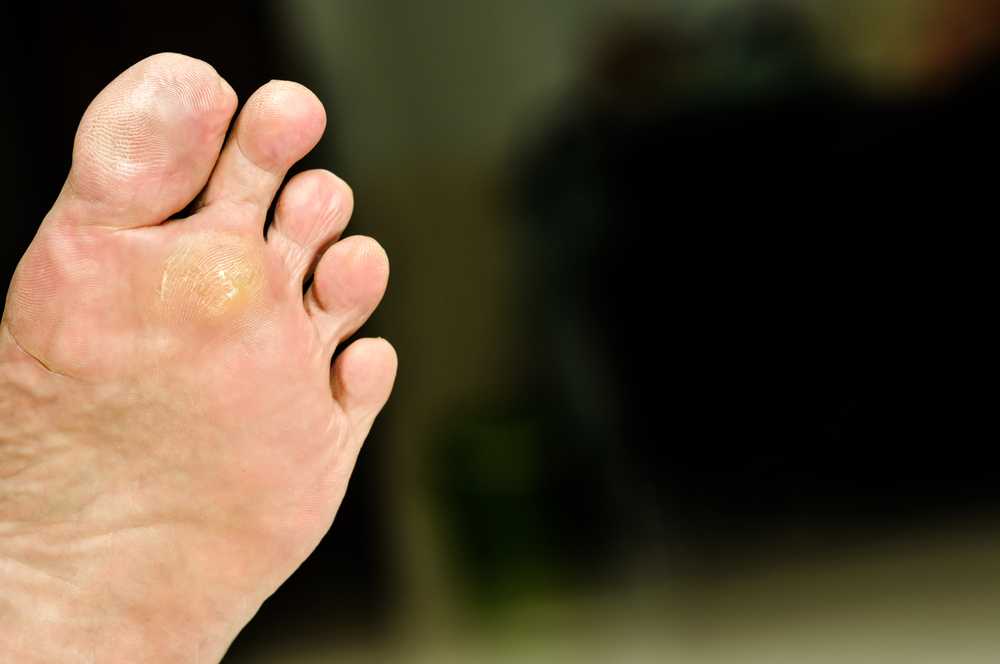 Heel pain is one of the most common foot ailments that people are forced to deal with. There are many possible causes for the pain, but the most common one is plantar fasciitis. Plantar fasciitis is a condition that is caused when the band of tissue that stretches from the heel to the metatarsal heads becomes inflamed. In order to treat the condition, non-surgical methods are often used first. Some of these treatments include stretching exercises, orthotics, splints, and injection therapy. While most people who have heel pain are suffering from plantar fasciitis, a few other sources of the pain could be achilles tendonitis, nerve pain, and bursitis.
Heel pain is one of the most common foot ailments that people are forced to deal with. There are many possible causes for the pain, but the most common one is plantar fasciitis. Plantar fasciitis is a condition that is caused when the band of tissue that stretches from the heel to the metatarsal heads becomes inflamed. In order to treat the condition, non-surgical methods are often used first. Some of these treatments include stretching exercises, orthotics, splints, and injection therapy. While most people who have heel pain are suffering from plantar fasciitis, a few other sources of the pain could be achilles tendonitis, nerve pain, and bursitis.
Plantar fasciitis can be very painful and inconvenient. If you are experiencing heel pain or symptoms of plantar fasciitis, contact Dr. Sharon Pletcher from Pennsylvania. Our doctor can provide the care you need to keep you pain-free and on your feet.
What Is Plantar Fasciitis?
Plantar fasciitis is the inflammation of the thick band of tissue that runs along the bottom of your foot, known as the plantar fascia, and causes mild to severe heel pain.
What Causes Plantar Fasciitis?
- Excessive running
- Non-supportive shoes
- Overpronation
- Repeated stretching and tearing of the plantar fascia
How Can It Be Treated?
- Conservative measures – anti-inflammatories, ice packs, stretching exercises, physical therapy, orthotic devices
- Shockwave therapy – sound waves are sent to the affected area to facilitate healing and are usually used for chronic cases of plantar fasciitis
- Surgery – usually only used as a last resort when all else fails. The plantar fascia can be surgically detached from the heel
While very treatable, plantar fasciitis is definitely not something that should be ignored. Especially in severe cases, speaking to your doctor right away is highly recommended to avoid complications and severe heel pain. Your podiatrist can work with you to provide the appropriate treatment options tailored to your condition.
If you have any questions please feel free to contact our office located in State College, PA. We offer the newest diagnostic and treatment technologies for all your foot and ankle needs.
Read more about Plantar FasciitisTroy Tulowitzki Suffers Ankle Sprain
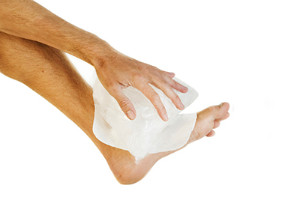 Blue Jays shortstop Troy Tulowitzki was placed on the 10-day disabled list due to a sprain in his right ankle. He suffered the injury in a game against the Angels when he collided with their first baseman, C.J. Cron, on a groundout. While Tulowitzki recently had an MRI, it was only able to show ligament damage in his ankle and not the severity of his injury. The infielder has had an underwhelming season thus far with a slash line of .250/.301/.379. In order to fill his spot on the active roster, the Jays have called up infielder Rob Refsnyder, who they recently acquired from the Yankees.
Blue Jays shortstop Troy Tulowitzki was placed on the 10-day disabled list due to a sprain in his right ankle. He suffered the injury in a game against the Angels when he collided with their first baseman, C.J. Cron, on a groundout. While Tulowitzki recently had an MRI, it was only able to show ligament damage in his ankle and not the severity of his injury. The infielder has had an underwhelming season thus far with a slash line of .250/.301/.379. In order to fill his spot on the active roster, the Jays have called up infielder Rob Refsnyder, who they recently acquired from the Yankees.
Ankle sprains are common but need immediate attention. If you need your feet checked, contact Dr. Sharon Pletcher from Pennsylvania. Our doctor can provide the care you need to keep you pain-free and on your feet.
How Does an Ankle Sprain Occur?
Ankle sprains take place when the ligaments in your ankle are torn or stretched beyond their limits. There are multiple ways that the ankle can become injured, including twisting or rolling over onto your ankle, putting undue stress on it, or causing trauma to the ankle itself.
What Are the Symptoms?
- Mild to moderate bruising
- Limited mobility
- Swelling
- Discoloration of the skin (depending on severity)
Preventing a Sprain
- Wearing appropriate shoes for the occasion
- Stretching before exercises and sports
- Knowing your limits
Treatment of a Sprain
Treatment of a sprain depends on the severity. Many times, people are told to rest and remain off their feet completely, while others are given an air cast. If the sprain is very severe, surgery may be required.
If you have suffered an ankle sprain previously, you may want to consider additional support such as a brace and regular exercises to strengthen the ankle.
If you have any questions please feel free to contact our office located in State College, PA. We offer the newest diagnostic and treatment technologies for all your foot and ankle needs.
Read more about Ankle SprainsHow to Protect Your Feet During the Summer
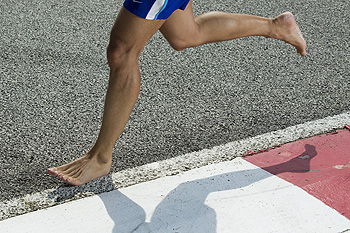 Foot problems can, at times, make walking on your feet nearly unbearable. Skin and nail issues are unfortunately very common foot conditions, but they are also can be easy to treat. According to a 2016 study, “Corns and calluses (hard, thick patches of skin caused by rubbing) are the most frequent factors in foot pain for older adults.” You can prevent getting corns and calluses by wearing socks along with footwear that fits you properly. If you want to avoid getting fungus, you should always make sure you are wearing shoes if you are in a public area such as a locker room. Bone and joint problems are also common foot conditions, with the most prevalent one being bunions. Bunions tend to occur when you wear narrow footwear that put a significant amount of pressure on your toes.
Foot problems can, at times, make walking on your feet nearly unbearable. Skin and nail issues are unfortunately very common foot conditions, but they are also can be easy to treat. According to a 2016 study, “Corns and calluses (hard, thick patches of skin caused by rubbing) are the most frequent factors in foot pain for older adults.” You can prevent getting corns and calluses by wearing socks along with footwear that fits you properly. If you want to avoid getting fungus, you should always make sure you are wearing shoes if you are in a public area such as a locker room. Bone and joint problems are also common foot conditions, with the most prevalent one being bunions. Bunions tend to occur when you wear narrow footwear that put a significant amount of pressure on your toes.
Everyday foot care is very important to prevent infection and other foot ailments. If you need your feet checked, contact Dr. Sharon Pletcher from Pennsylvania. Our doctor can provide the care you need to keep you pain-free and on your feet.
Everyday Foot Care
Often, people take care of their bodies, face and hair more so than they do for their feet. But the feet are a very important aspect of our bodies, and one that we should pay more attention to. Without our feet, we would not be able to perform most daily tasks.
It is best to check your feet regularly to make sure there are no new bruises or cuts that you may not have noticed before. For dry feet, moisturizer can easily be a remedy and can be applied as often as necessary to the affected areas. Wearing shoes that fit well can also help you maintain good foot health, as well as making it easier to walk and do daily activities without the stress or pain of ill-fitting shoes, high heels, or even flip flops. Wearing clean socks with closed shoes is important to ensure that sweat and bacteria do not accumulate within the shoe. Clean socks help to prevent Athlete’s foot, fungi problems, bad odors, and can absorb sweat.
If you have any questions please feel free to contact our office located in State College, PA. We offer the newest diagnostic and treatment technologies for all your foot and ankle needs.
Read more about Every Day Foot CareTackling Toenail Fungus
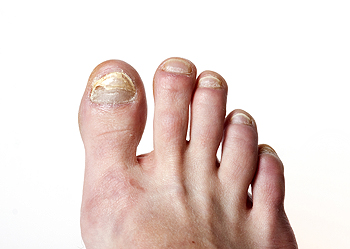 Toenail fungus is a type of disease that can cause your feet to look very unattractive. It can cause your nails to turn yellow in color and to thicken into an unnatural shape. The fungus can also make your nails very brittle, which may cause them to break off more easily. Fungi thrive well on the toes because they are often moist and warm, which are optimum living conditions for these organisms. An untreated toenail fungus can easily spread to other nails, including the fingernails, so it is important to get toenail fungus treated as soon as possible. Also, keep your body clean and healthy so you can prevent yourself from developing any sort of fungal infection.
Toenail fungus is a type of disease that can cause your feet to look very unattractive. It can cause your nails to turn yellow in color and to thicken into an unnatural shape. The fungus can also make your nails very brittle, which may cause them to break off more easily. Fungi thrive well on the toes because they are often moist and warm, which are optimum living conditions for these organisms. An untreated toenail fungus can easily spread to other nails, including the fingernails, so it is important to get toenail fungus treated as soon as possible. Also, keep your body clean and healthy so you can prevent yourself from developing any sort of fungal infection.
For more information about treatment, contact Dr. Sharon Pletcher of Pennsylvania. Our doctor can provide the care you need to keep you pain-free and on your feet.
Toenail Fungus Treatment
Toenail fungus is a condition that affects many people and can be especially hard to get rid of. Fortunately, there are several methods to go about treating and avoiding it.
Antifungals & Deterrence
Oral antifungal medicine has been shown to be effective in many cases. It is important to consult with a podiatrist to determine the proper regiment for you, or potentially explore other options.
Applying foot powder on the feet and shoes helps keep the feet free of moisture and sweat.
Sandals or open toed shoes – Wearing these will allow air movement and help keep feet dry. They also expose your feet to light, which fungus cannot tolerate. Socks with moisture wicking material also help as well.
If you have any questions please feel free to contact our office located in State College, PA. We offer the newest diagnostic tools and technology to treat your foot and ankle needs.
Read more about Toenail FungusFitting Shoes for a Child’s Growing Feet
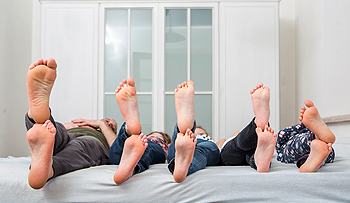 It can be hard for parents to find shoes that fit their growing child’s feet. It is important for children to wear shoes that fit well so that their feet will develop properly. Toddlers tend to go up half a size from the ages of fifteen months to two years old. When a child reaches ages three to five, they typically grow half a size every four months. Fortunately, the range of footwear available for children has been rapidly increasing. There are more options for children’s shoes than there have ever been before. Some of these new shoes include stylish sneakers and flats that offer enough support to be worn throughout the day.
It can be hard for parents to find shoes that fit their growing child’s feet. It is important for children to wear shoes that fit well so that their feet will develop properly. Toddlers tend to go up half a size from the ages of fifteen months to two years old. When a child reaches ages three to five, they typically grow half a size every four months. Fortunately, the range of footwear available for children has been rapidly increasing. There are more options for children’s shoes than there have ever been before. Some of these new shoes include stylish sneakers and flats that offer enough support to be worn throughout the day.
Making sure that your children maintain good foot health is very important as they grow. If you have any questions, contact Dr. Sharon Pletcher of Pennsylvania. Our doctor can provide the care you need to keep you pain-free and on your feet.
Keeping Children's Feet Healthy
Having healthy feet during childhood can help prevent medical problems later in life, namely in the back and legs. As children grow, their feet require different types of care. Here are some things to consider...
Although babies do not walk yet, it is still very important to take care of their feet.
Avoid putting tight shoes or socks on his or her feet.
Allow the baby to stretch and kick his or her feet to feel comfortable.
As a toddler, kids are now on the move and begin to develop differently. At this age, toddlers are getting a feel for walking, so don’t be alarmed if your toddler is unsteady or ‘walks funny’.
As your child gets older, it is important to teach them how to take care of their feet.
Show them proper hygiene to prevent infections such as fungus.
Be watchful for any pain or injury.
Have all injuries checked by a doctor as soon as possible.
Comfortable, protective shoes should always be worn, especially at play.
If you have any questions please feel free to contact our office located in State College, PA. We offer the newest diagnostic and treatment technologies for all your foot and ankle needs.
Read more about What to Do to Keep Your Child’s Feet HealthyWays to Avoid Injury While Running
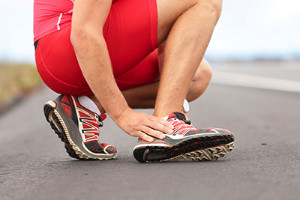 Injuries can be a major setback for people who love to run, so it is important that you take preventative measures in order to avoid them. One of the most vital tips for avoiding injury is to ease your way into any new routine. Jumping into more than you can handle is a common cause of injury for runners. Another tip is to buy appropriate shoes for your running workout. There are major differences between shoes that are built for walking, running, and cross-training; it is crucial that you choose footwear that is most suitable for your routine. Resting is also important so that you do not overwork your body. The human body isn’t built to do high-intensity workouts every day, so you should incorporate rest days into your schedule. Lastly, stretching is essential to every running routine. Always stretch before and after a run.
Injuries can be a major setback for people who love to run, so it is important that you take preventative measures in order to avoid them. One of the most vital tips for avoiding injury is to ease your way into any new routine. Jumping into more than you can handle is a common cause of injury for runners. Another tip is to buy appropriate shoes for your running workout. There are major differences between shoes that are built for walking, running, and cross-training; it is crucial that you choose footwear that is most suitable for your routine. Resting is also important so that you do not overwork your body. The human body isn’t built to do high-intensity workouts every day, so you should incorporate rest days into your schedule. Lastly, stretching is essential to every running routine. Always stretch before and after a run.
Exercising your feet regularly with the proper foot wear is a great way to prevent injuries. If you have any concerns about your feet, contact Dr. Sharon Pletcher of Pennsylvania. Our doctor will treat your foot and ankle needs.
How to Prevent Running Injuries
Many common running injuries are caused by overuse and overtraining. When the back of the kneecap starts wearing out and starts causing pain in your knee, this is commonly referred to as runner’s knee. Runner’s knee is a decrease in strength in your quadriceps and can occur if you’re not wearing properly fitted or supporting shoes. To prevent runner’s knee, focusing on hip strengthening is a good idea, as well as strengthening your quads to keep the kneecaps aligned.
What Are Some Causes of Running Injuries?
- One cause of a common running injury is called iliotibial band syndrome.
- Plantar fasciitis is also another common injury.
- Stress fractures can occur from overtraining, lack of calcium, or even your running style.
Best Ways to Prevent Running Injuries
- Wear footwear that fits properly and suits your running needs.
- Running shoes are the only protective gear that runners have to safeguard them from injury.
- Make a training schedule. Adding strengthening exercises as well as regular stretching can help keep you strong and limber and can lessen the possibility of injuries.
- Stretching keeps muscles limber; this will help you gain better flexibility.
If you have any questions please feel free to contact our office located in State College, PA. We offer the newest diagnostic and treatment technologies for all your foot and ankle needs.
Read more about How to Prevent Running InjuriesHow Wearing Flip-Flops May Cause Plantar Fasciitis
 Plantar fasciitis is a common condition that tends to appear during the summer months, and flip-flops could be one of the reasons this happens. Flip-flops offer no support for the feet, which causes the plantar fascia to stretch unnaturally; this may lead to heel pain. Wearing flip-flops also causes you to scrunch your toes in order to grip the thong of the sandal, causing you to shorten your stride. As a result, you may experience hammertoes, muscle pain, and shin splits from forcing your legs to work harder.
Plantar fasciitis is a common condition that tends to appear during the summer months, and flip-flops could be one of the reasons this happens. Flip-flops offer no support for the feet, which causes the plantar fascia to stretch unnaturally; this may lead to heel pain. Wearing flip-flops also causes you to scrunch your toes in order to grip the thong of the sandal, causing you to shorten your stride. As a result, you may experience hammertoes, muscle pain, and shin splits from forcing your legs to work harder.
Flip-flops are not always the best choice of footwear. If you have any concerns about your feet or ankles, contact Dr. Sharon Pletcher from Pennsylvania. Our doctor will assist you with all of your foot and ankle needs.
Flip-Flops and Feet
When the weather starts warming up, people enjoy wearing flip-flops. Flip-flops are comfortable, stylish, and easy to slip on and off; they're perfect for any summer beach goer. However, these shoes can cause harm to the feet.
How Can Flip-Flops Affect Me Long-Term?
- Ankle problems
- Hip problems
- Lower back problems
- Pain in the balls of the feet
- Problems with foot arches
- Changes in the way you walk
Are There Injuries Associated with Flip-Flops?
Yes. Since flip-flops are relatively weak and do not provide the same amount of support as sneakers, people who wear flip-flops regularly are more susceptible to injuries. On top of that, the open nature of the shoe makes your feet more prone to other problems, such as cuts and even infections. Common injuries and ailments include:
- Sprained ankles
- Blisters
- Infections
- Cuts and Scrapes
I like Wearing Flip-Flops. Are There Safe Alternatives?
When buying flip-flops, try to find ones that have sturdy soles and that are made of high-quality materials that will support for your feet. These flip-flops will cost more but will also last longer as a result.
If you have any questions please feel free to contact our office located in State College, PA. We offer the newest diagnostic and treatment technologies for all your foot and ankle needs.
Read more about Flip Flops and FeetCleveland Browns Top Pick Suffers Sprained Foot
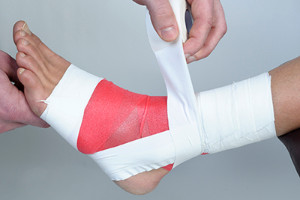 The Cleveland Browns recently learned that their top pick, Myles Garrett, suffered a sprain in his left foot. Garrett suffered the injury during the late stages of a practice and was seen grabbing his foot in pain immediately afterward. He is currently in a walking boot and is expected to receive treatment before the Browns training camp opens in late July. Although Garrett played most of last season with a severely sprained left ankle, the team was very impressed with him during spring workouts. According to the team’s defensive coordinator, “It is still way early, but you guys are going to see a pretty good football player when he gets the chance to get out there and go.”
The Cleveland Browns recently learned that their top pick, Myles Garrett, suffered a sprain in his left foot. Garrett suffered the injury during the late stages of a practice and was seen grabbing his foot in pain immediately afterward. He is currently in a walking boot and is expected to receive treatment before the Browns training camp opens in late July. Although Garrett played most of last season with a severely sprained left ankle, the team was very impressed with him during spring workouts. According to the team’s defensive coordinator, “It is still way early, but you guys are going to see a pretty good football player when he gets the chance to get out there and go.”
Sports related foot and ankle injuries require proper treatment before players can go back to their regular routines. For more information, contact Dr. Sharon Pletcher of Pennsylvania. Our doctor can provide the care you need to keep you pain-free and on your feet.
Sports Related Foot and Ankle Injuries
Foot and ankle injuries are a common occurrence when it comes to athletes of any sport. While many athletes dismiss the initial aches and pains, the truth is that ignoring potential foot and ankle injuries can lead to serious problems. As athletes continue to place pressure and strain the area further, a mild injury can turn into something as serious as a rupture and may lead to a permanent disability. There are many factors that contribute to sports related foot and ankle injuries, which include failure to warm up properly, not providing support or wearing bad footwear. Common injuries and conditions athletes face, including:
- Plantar Fasciitis
- Plantar Fasciosis
- Achilles Tendinitis
- Achilles Tendon Rupture
- Ankle Sprains
Sports related injuries are commonly treated using the RICE method. This includes rest, applying ice to the injured area, compression and elevating the ankle. More serious sprains and injuries may require surgery, which could include arthroscopic and reconstructive surgery. Rehabilitation and therapy may also be required in order to get any recovering athlete to become fully functional again. Any unusual aches and pains an athlete sustains must be evaluated by a licensed, reputable medical professional.
If you have any questions please feel free to contact our office located in State College, PA. We offer the newest diagnostic and treatment technologies for all your foot and ankle needs.
Read more about Sports Related Foot And Ankle InjuriesBroncos’ Kyle Peco Suffers Broken Foot
 Defensive tackle Kyle Peko of the Denver Broncos suffered a broken foot during practice, which will keep him out of camp for a significant amount of time. He is expected to have surgery on the broken foot soon, which is good news for the Broncos. Although his presence will be missed, Peko is expected to return to the team before training camp ends. Unfortunately the defensive tackle will also be missing important reps during his absence, which is bad news for the rest of the team. Peko’s time out will be an opportunity for younger players to win a spot for a more extended role in the Broncos organization.
Defensive tackle Kyle Peko of the Denver Broncos suffered a broken foot during practice, which will keep him out of camp for a significant amount of time. He is expected to have surgery on the broken foot soon, which is good news for the Broncos. Although his presence will be missed, Peko is expected to return to the team before training camp ends. Unfortunately the defensive tackle will also be missing important reps during his absence, which is bad news for the rest of the team. Peko’s time out will be an opportunity for younger players to win a spot for a more extended role in the Broncos organization.
A broken foot requires immediate medical attention and treatment. If you need your feet checked, contact Dr. Sharon Pletcher from Pennsylvania. Our doctor can provide the care you need to keep you pain-free and on your feet.
Broken Foot Causes, Symptoms, and Treatment
A broken foot is caused by one of the bones in the foot typically breaking when bended, crushed, or stretched beyond its natural capabilities. Usually the location of the fracture indicates how the break occurred, whether it was through an object, fall, or any other type of injury.
Common Symptoms of Broken Feet:
- Bruising
- Pain
- Redness
- Swelling
- Blue in color
- Numbness
- Cold
- Misshapen
- Cuts
- Deformities
Those that suspect they have a broken foot shoot seek urgent medical attention where a medical professional could diagnose the severity.
Treatment for broken bones varies depending on the cause, severity and location. Some will require the use of splints, casts or crutches while others could even involve surgery to repair the broken bones. Personal care includes the use of ice and keeping the foot stabilized and elevated.
If you have any questions please feel free to contact our office located in State College, PA. We offer the newest diagnostic and treatment technologies for all your foot and ankle needs.
Read more about Causes, Symptoms, and Treatment for a Broken FootMore...
Preventing Ingrown Toenails
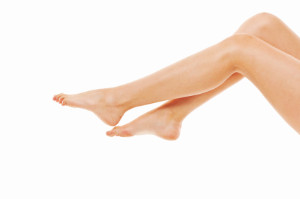 An ingrown toenail is something that may be preventable by taking the right steps. One of the most important precautions you can take to avoid getting an ingrown toenail is to make sure your shoes fit properly. Your shoes should have space in the front so that your toes have room to move around. Your toes should be able to “rest flat and straight” inside of your shoe. Another way to prevent ingrown toenails is to cut your toenails straight across instead of in a rounded shape. Cutting them straight across will allow your nails to grow out correctly, instead of growing down into your toe. Although there are ways you can prevent ingrown toenails, you should always see a podiatrist if you see any signs of infection.
An ingrown toenail is something that may be preventable by taking the right steps. One of the most important precautions you can take to avoid getting an ingrown toenail is to make sure your shoes fit properly. Your shoes should have space in the front so that your toes have room to move around. Your toes should be able to “rest flat and straight” inside of your shoe. Another way to prevent ingrown toenails is to cut your toenails straight across instead of in a rounded shape. Cutting them straight across will allow your nails to grow out correctly, instead of growing down into your toe. Although there are ways you can prevent ingrown toenails, you should always see a podiatrist if you see any signs of infection.
Ingrown toenails can become painful if they are not treated properly. For more information about ingrown toenails, contact Dr. Sharon Pletcher of Pennsylvania. Our doctor can provide the care you need to keep you pain-free and on your feet.
Ingrown Toenails
Ingrown toenails occur when a toenail grows sideways into the bed of the nail, causing pain, swelling, and possibly infection.
Causes
- Bacterial infections
- Improper nail cutting such as cutting it too short or not straight across
- Trauma to the toe, such as stubbing, which causes the nail to grow back irregularly
- Ill-fitting shoes that bunch the toes too close together
- Genetic predisposition
Prevention
Because ingrown toenails are not something found outside of shoe-wearing cultures, going barefoot as often as possible will decrease the likeliness of developing ingrown toenails. Wearing proper fitting shoes and using proper cutting techniques will also help decrease your risk of developing ingrown toenails.
Treatment
Ingrown toenails are a very treatable foot condition. In minor cases, soaking the affected area in salt or antibacterial soaps will not only help with the ingrown nail itself, but also help prevent any infections from occurring. In more severe cases, surgery is an option. In either case, speaking to your podiatrist about this condition will help you get a better understanding of specific treatment options that are right for you.
If you have any questions please feel free to contact our office located in State College, PA. We offer the newest diagnostic and treatment technologies for all your foot and ankle needs.
Read more about Ingrown Toenail CareThe Harmful Effects of Heels
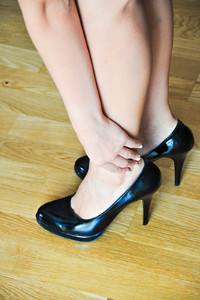 Women are often faced with social pressure to wear high heels. Although they make for a wonderful fashion statement, high heels may slowly harm your feet. Heels cause your body to shift forward, therefore pushing all your weight onto the ball of your foot. Wearing high heels may push your hips and knees forward as well, which forces your back to compensate and hyperextend. Consequently, your entire spine may become misaligned. Other problems that may stem from wearing heels include stress fractures, knee pain, back pain, and tendinitis. If you still choose to wear heels, you should know that moderation is key. Another tip is to wear a commuter shoe on your way to work to save yourself from the pain that wearing heels may cause.
Women are often faced with social pressure to wear high heels. Although they make for a wonderful fashion statement, high heels may slowly harm your feet. Heels cause your body to shift forward, therefore pushing all your weight onto the ball of your foot. Wearing high heels may push your hips and knees forward as well, which forces your back to compensate and hyperextend. Consequently, your entire spine may become misaligned. Other problems that may stem from wearing heels include stress fractures, knee pain, back pain, and tendinitis. If you still choose to wear heels, you should know that moderation is key. Another tip is to wear a commuter shoe on your way to work to save yourself from the pain that wearing heels may cause.
High heels have a history of causing foot and ankle problems. If you have any concerns about your feet or ankles, contact Dr. Sharon Pletcher from Pennsylvania. Our doctor can provide the care you need to keep you pain-free and on your feet.
Effects of High Heels on the Feet
High heels are popular shoes among women because of their many styles and societal appeal. Despite this, high heels can still cause many health problems if worn too frequently.
Which Parts of My Body Will Be Affected by High Heels?
- Ankle Joints
- Achilles Tendon – May shorten and stiffen with prolonged wear
- Balls of the Feet
- Knees – Heels cause the knees to bend constantly, creating stress on them
- Back – They decrease the spine’s ability to absorb shock, which may lead to back pain. The vertebrae of the lower back may compress.
What Kinds of Foot Problems Can Develop from Wearing High Heels?
- Corns
- Calluses
- Hammertoe
- Bunions
- Morton’s Neuroma
- Plantar Fasciitis
How Can I Still Wear High Heels and Maintain Foot Health?
If you want to wear high heeled shoes, make sure that you are not wearing them every day, as this will help prevent long term physical problems. Try wearing thicker heels as opposed to stilettos to distribute weight more evenly across the feet. Always make sure you are wearing the proper shoes for the right occasion, such as sneakers for exercising. If you walk to work, try carrying your heels with you and changing into them once you arrive at work. Adding inserts to your heels can help cushion your feet and absorb shock. Full foot inserts or metatarsal pads are available.
If you have any questions please feel free to contact our office located in State College, PA. We offer the newest diagnostic and treatment technologies for all your foot and ankle needs.
Read more about Effect of High Heels on the FeetStrengthening Your Soles to Prevent Running Injuries
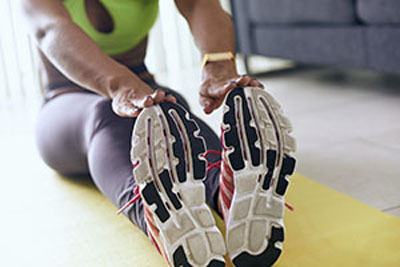 About 79 percent of runners experience some type of foot injury each year. It requires a bit of extra work to keep your feet in top running order, however it is necessary in order to prevent injury. If you want to make your feet less susceptible to injury, you should focus on strengthening your soles. According to clinical director Luke Bongiorno, "When your feet are stronger, you'll have better propulsion, which can help you run faster and more efficiently.” You should also be more selective when it comes to buying a new pair of running shoes. Recent studies have shown that minimalist sneakers may be more effective in preventing injury compared to running sneakers with high arches.
About 79 percent of runners experience some type of foot injury each year. It requires a bit of extra work to keep your feet in top running order, however it is necessary in order to prevent injury. If you want to make your feet less susceptible to injury, you should focus on strengthening your soles. According to clinical director Luke Bongiorno, "When your feet are stronger, you'll have better propulsion, which can help you run faster and more efficiently.” You should also be more selective when it comes to buying a new pair of running shoes. Recent studies have shown that minimalist sneakers may be more effective in preventing injury compared to running sneakers with high arches.
Exercising your feet regularly with the proper foot wear is a great way to prevent injuries. If you have any concerns about your feet, contact Dr. Sharon Pletcher of Pennsylvania. Our doctor will treat your foot and ankle needs.
How to Prevent Running Injuries
Many common running injuries are caused by overuse and overtraining. When the back of the kneecap starts wearing out and starts causing pain in your knee, this is commonly referred to as runner’s knee. Runner’s knee is a decrease in strength in your quadriceps and can occur if you’re not wearing properly fitted or supporting shoes. To prevent runner’s knee, focusing on hip strengthening is a good idea, as well as strengthening your quads to keep the kneecaps aligned.
What Are Some Causes of Running Injuries?
- One cause of a common running injury is called iliotibial band syndrome.
- Plantar fasciitis is also another common injury.
- Stress fractures can occur from overtraining, lack of calcium, or even your running style.
Best Ways to Prevent Running Injuries
- Wear footwear that fits properly and suits your running needs.
- Running shoes are the only protective gear that runners have to safeguard them from injury.
- Make a training schedule. Adding strengthening exercises as well as regular stretching can help keep you strong and limber and can lessen the possibility of injuries.
- Stretching keeps muscles limber; this will help you gain better flexibility.
If you have any questions please feel free to contact our office located in State College, PA. We offer the newest diagnostic and treatment technologies for all your foot and ankle needs.
Read more about How to Prevent Running InjuriesFoot Care while Hiking
 Those who enjoy hiking as a regular activity should be sure to employ foot care while on the trail to avoid potential pain and injury. The first step to maintaining proper foot care while hiking is to be aware of one’s surroundings. Many hiking-related foot injuries and conditions often occur as a result of not being aware while on the trail: rolled ankles, broken toes, and blisters. When hiking, be sure to wear shoes that are breathable and that either dry quickly or are waterproof. When trying on hiking boots or shoes, finding a great fit is important. With modern innovations in footwear, hiking boots are becoming lighter and more comfortable.
Those who enjoy hiking as a regular activity should be sure to employ foot care while on the trail to avoid potential pain and injury. The first step to maintaining proper foot care while hiking is to be aware of one’s surroundings. Many hiking-related foot injuries and conditions often occur as a result of not being aware while on the trail: rolled ankles, broken toes, and blisters. When hiking, be sure to wear shoes that are breathable and that either dry quickly or are waterproof. When trying on hiking boots or shoes, finding a great fit is important. With modern innovations in footwear, hiking boots are becoming lighter and more comfortable.
Everyday foot care is very important to prevent infection and other foot ailments. If you need your feet checked, contact Dr. Sharon Pletcher from Pennsylvania. Our doctor can provide the care you need to keep you pain-free and on your feet.
Everyday Foot Care
Often, people take care of their bodies, face and hair more so than they do for their feet. But the feet are a very important aspect of our bodies, and one that we should pay more attention to. Without our feet, we would not be able to perform most daily tasks.
It is best to check your feet regularly to make sure there are no new bruises or cuts that you may not have noticed before. For dry feet, moisturizer can easily be a remedy and can be applied as often as necessary to the affected areas. Wearing shoes that fit well can also help you maintain good foot health, as well as making it easier to walk and do daily activities without the stress or pain of ill-fitting shoes, high heels, or even flip flops. Wearing clean socks with closed shoes is important to ensure that sweat and bacteria do not accumulate within the shoe. Clean socks help to prevent Athlete’s foot, fungi problems, bad odors, and can absorb sweat.
If you have any questions please feel free to contact our office located in State College, PA. We offer the newest diagnostic and treatment technologies for all your foot and ankle needs.
Read more about Every Day Foot Care



